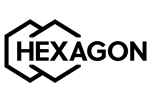Hexagon Purus receives first hydrogen distribution systems order for 2024
Hybrid system will enable German-based Hypion to efficiently transport and refuel hydrogen with the same distribution system.

Hexagon Purus hydrogen distribution system. Photo Credit: Hexagon Purus
Hexagon Purus, through its wholly owned subsidiary, Wystrach (Weeze, Germany), has received its first order for hydrogen distribution systems from Hypion (Heide, Germany), a full-service provider of green hydrogen projects. Hexagon Purus’ hydrogen distribution systems including its Type IV hydrogen tanks will be used to both transport hydrogen and as mobile storage for the planned network of green hydrogen refueling stations in Germany. The value of the order is approximately €2.2 million (approximately NOK 22 million) and represents the first hydrogen distribution systems order with delivery in 2024.
“Partnering with the best and most experienced suppliers on the market is crucial to successfully implement our business strategy in an economical and competitive way,” Dr. Stefan Rehm, development director of Hypion, says. “We are glad to get Hexagon Purus as part of the team to develop a network of green hydrogen refueling stations in Germany.”
According to Matthias Kötter, head of sales Wystrach, Hexagon Purus, the company’s high-pressure distribution system can also be used as a mobile storage for hydrogen refueling stations, lowering total investments and operating costs through the reduction of other on-site fixed storage capacity and energy consumption. “Allowing for hybrid use of our distribution systems, will enable Hypion to efficiently transport and refuel hydrogen with the same distribution system,” Kötter adds.
Delivery of the hydrogen systems is scheduled in Q1 2024.
Related Content
-
Collins Aerospace to lead COCOLIH2T project
Project for thermoplastic composite liquid hydrogen tanks aims for two demonstrators and TRL 4 by 2025.
-
Composites end markets: Batteries and fuel cells (2024)
As the number of battery and fuel cell electric vehicles (EVs) grows, so do the opportunities for composites in battery enclosures and components for fuel cells.
-
TU Munich develops cuboidal conformable tanks using carbon fiber composites for increased hydrogen storage
Flat tank enabling standard platform for BEV and FCEV uses thermoplastic and thermoset composites, overwrapped skeleton design in pursuit of 25% more H2 storage.













